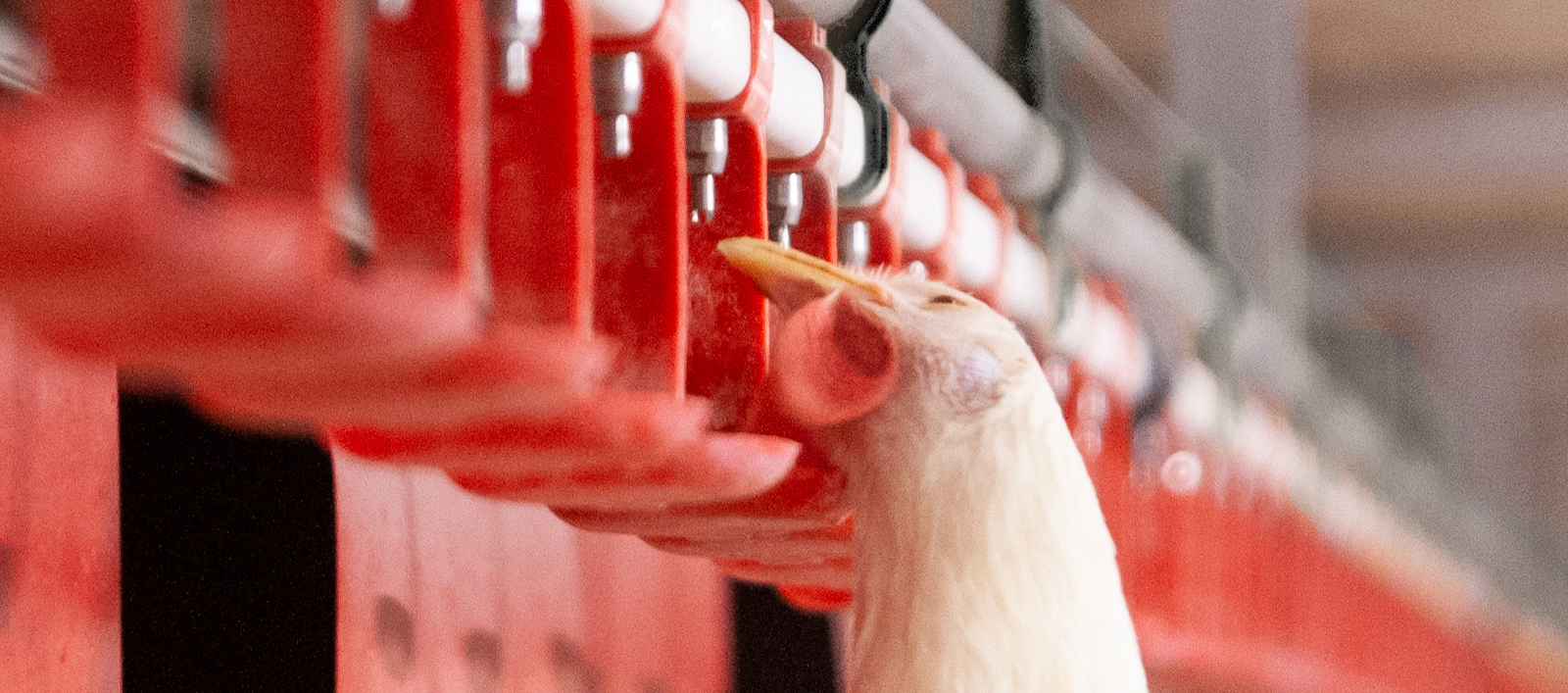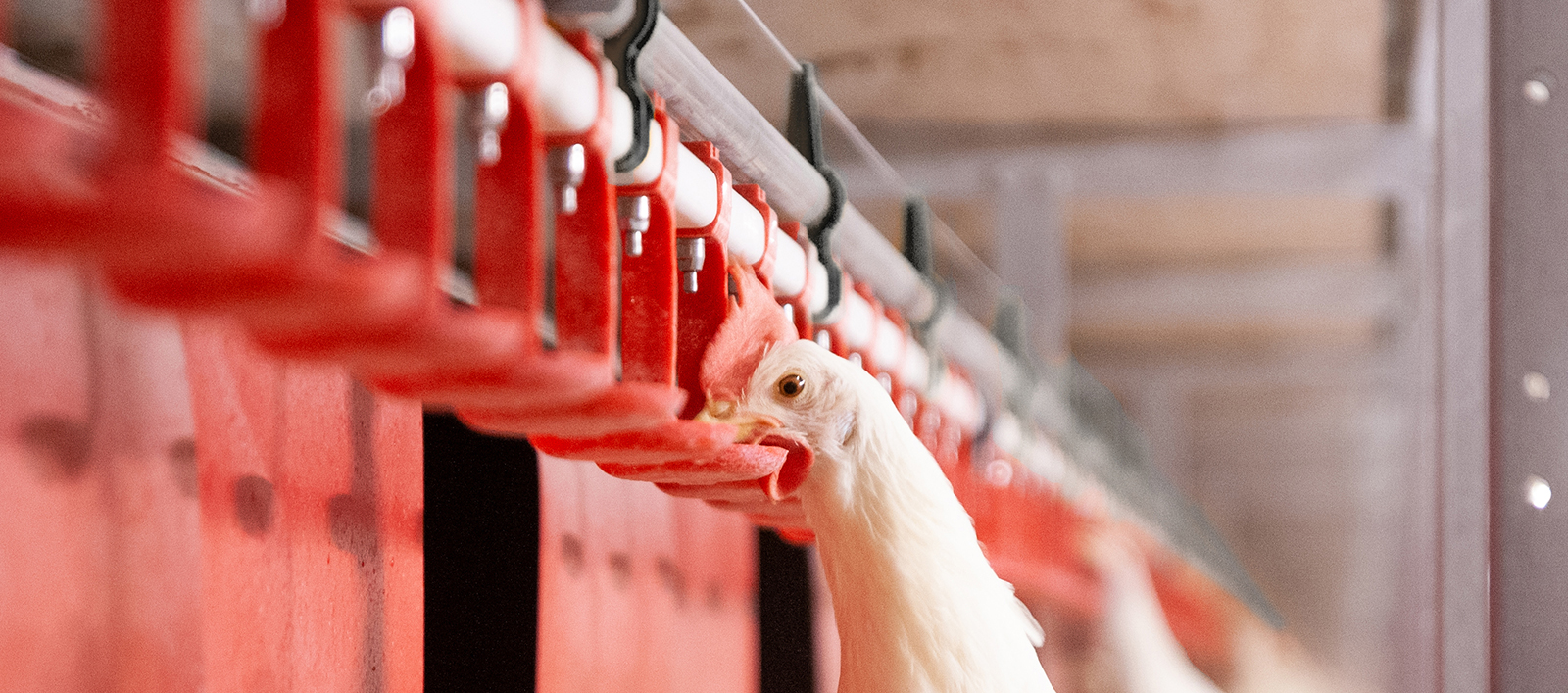Untrimmed laying hens drink differently than trimmed laying hens. Unlike trimmed hens, untrimmed hens peck at the nipple with a tilted head. This requires more effort to ingest the water, and so they waste more water. It can even result in some hens not getting enough water and ultimately in a decline in their performance.
Monitoring water consumption can be a helpful way to determine whether the animals are ingesting enough water. The problem is that the water wastage can create a distorted picture, and you, therefore, will draw incorrect conclusions from it. Walking around the house and seeing your hens' drinking behavior with your own eyes is still one of the best ways to determine if they are drinking well.
Here are five ways you can reduce water wastage and maintain your animals' water intake.
Especially at the start of a new round, the height of the drinking line can be a determining factor. Because the animals turn their heads to peck at the nipple, they have to reach further. And when the line hangs just too high, they will waste more water. Situating the drinking line lower or placing an elevation below the drinking line makes it easier for the hens to reach the drinking nipple.

Research has shown that untreated laying hens waste significantly less water when using a 360-degree drinking nipple with low flow side-action. Unlike 180-degree nipples, 360-degree nipples can also be activated from the side. As a result, the hens mess less while drinking. These nipples are specially designed to close very fast after drinking, thereby further reducing water wastage.
Collect the wasted water by placing drip cups under the nipples so you keep the litter and manure belt dry. In addition, hens who find it difficult to drink from the nipples will prefer to drink from the cups. If this is the case, though, it is important to keep the drip cups clean, so the animals do not ingest contaminated water and incur possible intestinal health problems.

An incorrect water pressure also causes problems. Too high a water pressure will cause the water to spray out of the nipple as soon as it is activated. This makes it difficult for the hens to drink and basically results in one big wet mess.
On the other hand, too low a water pressure means not enough water is coming out of the nipples, and the hens cannot drink enough. More importantly, if the water pressure is too low, the water will not distribute properly over the drinking lines, causing the drinking nipples at the end of the lines to no longer dispense water at all.
Let bij het bepalen van de waterdruk goed op de volgende zaken:
The water pressure is too high: Are the manure belt, nest flaps, or litter wet? Do the hens have wet feathers, or are the drip cups constantly filled with water? Then the water pressure is probably too high.
The water pressure is too low: Is the area around the drinking nipples dry? Is there little to no water coming out of the drinking nipples at the end of the line? Are the hens often visiting the nipples, and do they peck at them fiercely? Are there cases of feather pecking? Then there is a good chance that the water pressure is too low.
Check here the optimal settings for your laying hens
It is important to check the quality of the water regularly. You can do this by placing a white bucket at the end of the drinking line and checking the discoloration and smell of the water that comes out of the line. But not all problems are detectable with the naked eye. It is, therefore, wise to regularly take samples from the water source itself and the end of the drinking line.
Flushing the drinking lines regularly and using the correct cleaning agents is also important to keep the drinking lines clean and prevent biofilm build-up as much as possible.



